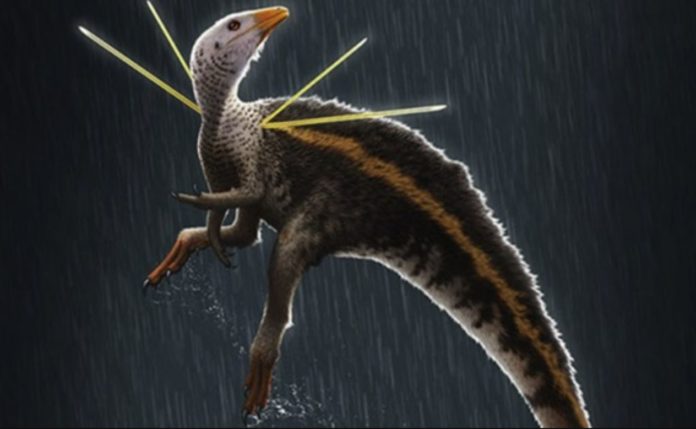Ubirajara Jubatus is very different from its relatives and, although the size could compare with a chicken, it was difficult not to notice it. It’s all about the thick “mane” and awkwardly long spikes-tapes of keratin, which grew from the shoulders of the animal.
Birds are especially famous for their ability to stand out among the animal world. And, it seems, this is not a unique feature of them: they could have inherited such features from their ancestors – dinosaurs.
Evidence of this is the remains of a pangolin about 110 million years old, which were found in Brazil. Not only the skeleton has survived from it, but also the petrified soft tissues, “fur” and those very long spines. The dinosaur was named Ubirajara Jubatus.
Using X-ray methods, researchers were able to study the features of the internal organs, as well as the elements of the perfectly preserved outer cover of the animal, hidden in the stone.
Scientists point out that the long thorns-ribbons protruding from the lizard’s shoulders consisted of keratin, which, unlike bone, is more flexible and uses less body energy to grow.
Another feature of the dinosaur is its long “fur”, which probably stood on end when the animal saw danger in front of it. All these striking features, in theory, should interfere with survival.
However, paleontologists believe they helped Ubirajara Jubatus attract the opposite sex and served the same purpose that the peacock’s tail serves today.
Therefore, scientists believe that the found individual is male. After all, decorations are typical for them, and not for females of modern birds. It seems that Ubirajara Jubatus could demonstrate to his “admirers” something like the dance of the male of the living bird of paradise.
- Scientists in Fear of This New Predator From Red Sea Eating Native Species in Mediterranean
- Does This Mean We Stopped Being Animal and Started Being Human Due to ‘Copy Paste’ Errors?
- The One Lifestyle Choice That Could Reduce Your Heart Disease Risk By More Than 22%
- Aging: This Is What Happens Inside Your Body Right After Exercise
- Immune-Boosting Drink that Mimics Fasting to Reduce Fat – Scientists ‘Were Surprised’ By New Findings
It is the first non-avian dinosaur with a preserved outer cover found in the ancient supercontinent of Gondwana.
The results of the study have been published in the journal Cretaceous Research.



